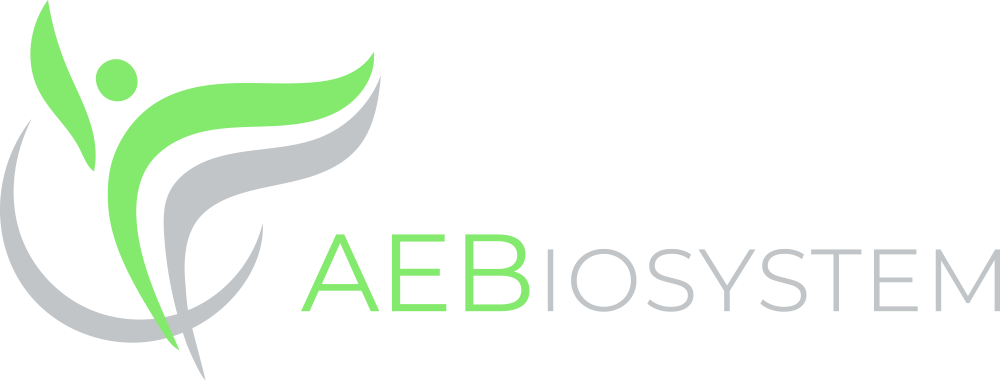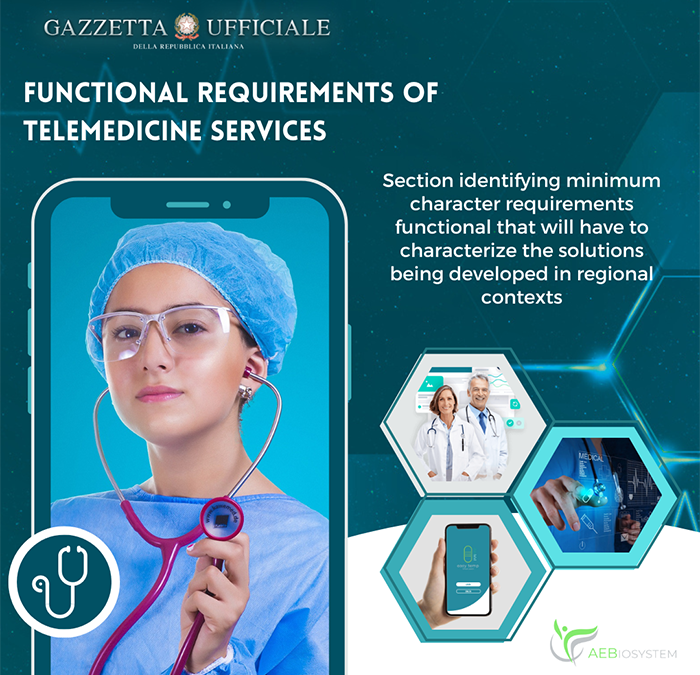As we introduced in the previous article, the Guidelines aim to support dal
technical point of view the regions and autonomous provinces for the definition of projects on services
telemedicine. “Section 1” indicates the Functional Requirements of the Telemedicine Services,
i.e. the minimum functional requirements that must characterize the projects so that the provision of
health services in the telemedicine regime is homogeneous.
The user who can use the Telemedicine service must be eligible, for this service,
from a clinical, technological, cultural and autonomy point of view or availability of a caregiver, if
necessary. Clinical eligibility will be assessed on the unquestionable judgment of the doctor. Being a
remote service, the user must have compatible technological equipment for
performance, the suitability of which will be assessed, for example if you have a smartphone
suitable for installing applications. Inspections will be carried out if necessary
patient’s home, to check the physical, plant and hygienic characteristics.
The ability to use kits for telemedicine, i.e. digital literacy, will be evaluated
(digital literacy) of the patient and/or caregiver, to assess the degree of autonomy in use
of the devices.
The minimum services that the Regional Telemedicine Infrastructure (IRT) will have to provide will be:
1. Television;
1. Teleconsultation/Teleconsultation;
2. Telemonitoring;
3. Teleassistance.
Each of them will be composed of a set of logical micro-services that will describe its perimeter
functional and are classified within one of the following clusters:
1. Specific: they are the logical-functional micro-services essential for the provision of services
telemedicine;
2. Transversal: these are the logical micro-services necessary, in the single regional context, for
integration with services functional to the provision of services both in presence and in
Telemedicine. These services are in support of the Regional Health System to integrate the
Telemedicine within the existing organizational, technological and regulatory model e
must be included in regional projects;
3. Optional: these are the micro-services that can be included in the scope of functionality of
regional Telemedicine projects but which are not necessary for the development of services
minimums and for the provision of telemedicine services.
This classification allows each region to submit modular projects that suit its own
organizational and technological context, in line with the modernization and completion plans
of regional ecosystems. Specific and transversal micro-services are necessary and always go
included for IRT to work. Where some cross-cutting micro-services are not present,
the region will be able to decide whether to implement the transversal service with its own funding and then
proceed, with the PNRR funds, to integrate with the IRT, or implement only one version
minimum cross service.
Example: if the “reporting and digital signature” module is not present in region x, this will be able
decide whether to implement the service with its own funds and then integrate it with the IRT, or if
implement within the IRT the minimum version necessary to provide the service.
If the region has already implemented one of the four minimum services, it can consider acquiring the services
minimum missing from the suites made available by the lead regions, as long as the service
implemented meets the guidelines. The suites that will make up the IRTs will have to include all e
four minimum services.
For the classification of specific, transversal, optional micro-services pertaining to the four services
minimum, please refer to the document in link:
For each IRT, two realities must be foreseen:
1. One or more Service Centres, managed by technical staff and with technical tasks including
distribution of medical devices to the patient’s home, their installation e
maintenance, collection and sanitization at the end of the service. It takes care of aspects such as:
- Platform maintenance;
- Account management;
- Help desk for users taken over by the IRT;
- Monitoring and management of technical “Alerts” of medical devices;
- Training, aimed at patients and caregivers, on the use of medical devices.
2. One or more Supply Centers, managed by healthcare professionals and with healthcare tasks including
the provision of Telemedicine services for the monitoring of clinical parameters of
patients and the management of health alerts.
From a technical point of view, the IRT will have to allow the provision of the service 24 hours a day, 7 days a week. The projects
presented by the regions must define, for the four minimum services, the service levels (SLA)
relating to the practices of:
- Incident Management;
- Enabling change (Change Management);
- Service Request Management.
The times for taking charge and the times for restoring the service must be defined taking into account
the evaluation of the priority of anomalies/accidents. The priority levels of the anomalies will be
evaluated according to two analysis parameters:
➢ Urgency: identifies the urgency of the intervention based on the type of functionality of the
minimum service fault;
➢ Impact: identifies the impacts of the malfunction that occurred at the level of the various
types of users involved.
The combination of the two parameters allows the construction of a Priority Matrix which it assigns
the degree of priority to anomalies. The two parameters each have four internal levels: critical, high,
medium low. It is obtained by crossing them 16 evaluations.
Example: if a critical impact crosses with a medium level of urgency, we will have a priority
high of the anomaly. Similarly a low impact and high urgency will give a grade of
priority of the average anomaly.
With reference to the Matrix, the table with the corrective maintenance SLAs is shown,
i.e. the times for taking charge and resolution of incidents and restoring the service, times that
must be guaranteed by the Telemedicine Minimum Service Providers. These timings
must be consistent with those recommended by the manufacturers of medical devices.
Conclusions
The standard highlights how the focus is placed on the user and on territorial homogeneity.
The aim will be to guarantee a widespread monitoring network in the concrete life of the user.
In fact, we talk about inspections in the patient’s home, patient and caregiver training,
of technological equipment. Essential requirements for the service to be used.
It is clear that the same rule leaves points for reflection: what to do if the patient has
the proven clinical eligibility but for socio/economic/cultural conditions does not have
the eligibility that we could define as technical? What is expected in these cases? Who will be training
the audience and how will the training be evaluated? What are the funds for technological equipment
aimed at users where not available but necessary, following the clinical evaluation? The
our point of view is not so much to make use of the service to those who already know how to use the technology, but rather
integrate those who, for various reasons, are not familiar with it.
With regard to territorial homogeneity, what is meant by lead regions? The terms could
result in contrast and a ranking between regions is announced: those already ready to disburse the
service and those not yet ready. In what times will homogeneity be achieved? The user
belonging to these regions, how long will it be possible to use the service? It’s not clear yet
by when the regions will regulate everything, but certainly, we are among the first countries in Europe to
regulate Telemedicine.
A positive aspect is the glue between virtual and real given by the creation of Service Centers and Centres
Regulators. The standard has not forgotten the importance of a real and physical reference point for
the provision of the service. The central point remains monitoring. This minimal service, Telemonitoring, relies on technology and the use of it from
part of the user. This presupposes a careful choice of the medical devices to be used. There
precision of these and their reliability must marry with a high degree of ease of use and
not only that, also of maintenance and resolution of any problems.
We hope these premises will eliminate the defined medical devices from the choice
erroneously such, in favor of the true and reliable, widely certified ones. This is one aspect
important given the diffusion of devices for daily use that release data monitoring
vital parameters to the user without having the minimum certification relating to medical devices.
This could be a cultural milestone related to the use of technology, which guarantees
the user the reliability and validity of clinical data.
Article written in collaboration with Dr. Paolo Marini, Telecommunications Engineer and the
Dr. Giovanna Giarrusso, Psychologist – Psychotherapist in Training

